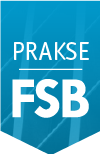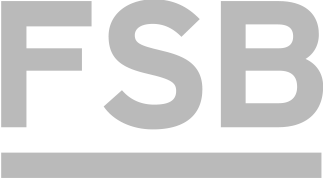International Exchange
Course details
Student Mobility > Programmes and Courses > Courses in English > Course detailsNanometrology
- Teaching: Completely taught in English
- ECTS: 5
- Level: Graduate
- Semester: Winter
- Prerequisites:
- No prerequisites.
- Load:
Lectures Exercises Laboratory exercises Project laboratory Physical education excercises Field exercises Seminar Design exercises Practicum 30 30 0 0 0 0 0 0 - Course objectives:
- 1. Theoretical principles of nanometrology. 2. Problems in ensuring measurement traceability in the field of dimensional nanometrology. 3. Measurement methods and measuring equipment in the field on nanometrology.
- Student responsibilities:
- Grading and evaluation of student work over the course of instruction and at a final exam:
- Active participation during lecturers or exercises - 10% Quality of seminar paper - 50% Oral public presentation of seminar (discussion, questions, answers) - 40%
- Methods of monitoring quality that ensure acquisition of exit competences:
- In order to have continuous monitoring of quality performance of the Course an anonymous, simple and quick questionnaires of student’s opinion will be preformed by use of module Moodle application Question. The readiness of students to other forms of engagement will be analyzed (research, discussion, development projects, etc.) At the end, the quality of Course will be assessed through University questionnaire that student fulfills online, through the ISVU system, in order to evaluate work of teachers and the attractiveness of topics.
- Upon successful completion of the course, students will be able to (learning outcomes):
- After successfully completing the course, the student will be able to: 1. Interpret fundamental metrological concepts and theoretical principles in the field of dimensional nanometrology. 2. Compare and recommend the method in the field of dimensional nanometrology with respect to the measurand. 3. Conduct interferometric measurements in the field of dimensional nanometrology. 4. Critically deliberate the reproducibility of measurement results in the field of dimensional nanometrology. 5. Debate the issues of ensuring traceability in the field of dimensional nanometrology.
- Lectures
- 1. Introduction to nanometrology. Scope of nanometrology. Characteristic orders of precision. Trends in modern manufacturing industry.
- 2. Function, realisation, conditions, physical and mechanical characteristics of surfaces. Surface micro- and macro-geometry.
- 3. Surface quality related standards. Surface topography. 2D and 3D evaluation systems.
- 4. 3D surface roughness parameters (vertical, spatial, hybrid, surface, bulk and functional).
- 5. Methods for surface tomography evaluation. Surface roughness standards.
- 6. Geometrical optics. Reflection and refraction. Index of refraction. Lenses. Lens imperfections.
- 7. Applying interferometry in length measurements. Interferometry microscopy, phase shift technique and related measurement algorithm.
- 8. Laser types. Computer aided laser stabilisation. Lasers in interferometric length measurements.
- 9. Types of polarisation. Change and determination of polarisation using polariser. Ellipsometry.
- 10. Applying holography in 3D representation of surface structures.
- 11. Metrology set-ups for length measurements and surface characterisation.
- 12. Positioning of nanometrology components. Precise translation and rotation using piezoelectric and related sensors. Optoelectronic transducers in nanometrology.
- 13. Characteristics and examples of connecting PC and nanometrology set-up components.
- 14. Basic characteristics, use and types of video-systems.
- 15. Trends in nanometrology development.
- Exercises
- 1. Illustrative examples of nanometrology applications. Introduction to EUSPEN activities.
- 2. Evaluation of surface micro- and nanogeometry regarding surface function.
- 3. Surface quality related standards. Surface topography. 2D and 3D evaluation systems. Example of 2D surface roughness evaluation using contact method.
- 4. Example of surface topography evaluation. Determination of 3D surface parameters.
- 5. Surface topography evaluation using interferometry method. Determination of depth groove of standard using ellipsometry.
- 6. Demonstration lf laws of geometrical optics. Determination of index of refraction.
- 7. Measuring lengths and flatness deviation using interferometry.
- 8. Establishing and testing laser stabilisation.
- 9. Example of change and determination of polarisation of light.
- 10. Example of hologram construction.
- 11. Example of surface characterisation using holography.
- 12. Example of precise rotation and translation of nanometrology setup.
- 13. Example of connecting PC with nanometrology set-up components.
- 14. Recording the interpherogram with a CCD camera. Example of line separation measurement using video system.
- 15. Final discussion and examples.
- Compulsory literature:
- 1. D.J.Whitehouse, "The Handbook of Surface and Nanometrology", Institute of Physics Pub, 1999.
2. F.T.Farago, M.A.Curtis, "Handbook of Dimensional Measurement", Industrial Press Inc. New York, 2012.
3. B. Dorband, H. Muller, H. Gross, Handbook of Optical Systems, 2012, Volume 5.
4. European Nanometrology 2020, Co-ordination of Nanometrology in Europe Co-Nanomet, 2011. - Recommended literature:
- -






